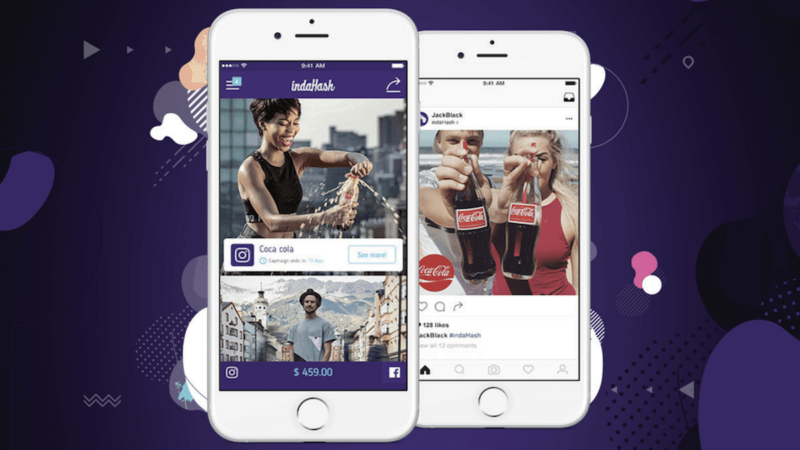The influencer marketing startup sees bitcoin-like private currency as a way to speed payments, avoid multiple banking systems and encourage followers.

A multinational startup is planning on using blockchain-generated crytocurrency to pay its influencers — and to let its influencers pay their followers.
Founded last year, the Warsaw-based indaHash has seven offices worldwide for its work with brands and 300,000+ influencers in about 70 markets, CEO and co-founder Barbara Soltysinska told me.
A brand uses a desktop-based dashboard to select the kind of campaign it wants to run, and the platform shows that campaign to influencers who match the specs.
Influencers view the campaign through the indaHash iOS or Android mobile app, and then submit campaign-related content to the brand for approval before posting to their followers. Or a brand can run a non-approval campaign, where selected influencers are free to post whatever related content.
For indaHash, the idea of generating its own bitcoin-like Coins is an appealing way to pay influencers in those countries without having to deal with multiple banking systems.
The indaHash Coins will be generated through an Ethereum blockchain, based on currency exchange rates from leading bitcoin exchanges. A brand can then use the indaHash platform to immediately pay the influencers using indaHash Coins, and influencers don’t have wait 60 or 90 days to receive their fee.
Chief Product Officer Wlas Chorowiec told me that, as part of this new “Pay with Fame” service, his company is setting up a network of e-commerce websites that will accept the indaHash Coins as direct payment. Or influencers will be able to use a debit card at online and physical stores that take debit cards, except the withdrawals will be from accounts holding indaHash Coins.
Both the cooperating sites and the debit card are expected by next year, he said. Because indaHash Coins save banking fees and time, the company is offering a 20 percent bonus for influencers who accept it as their payment.
And indaHash is taking the idea of private currency one step further, by letting influencers generate their own cryptocurrency.
Through the indaHash app, a participating influencer can order, say, 1000 Me Coins. Unlike indaHash Coins, the influencer coins have no currency exchange value. But they can be awarded to followers for sharing, liking or commenting a post, which is conveyed to the influencer through an indaHash API on Facebook or Instagram and managed through controls on the indaHash app. (indaHash’s third platform, Snapchat, does not yet provide the support needed for distribution of influencer coins.)
A follower might then trade the collected influencer coins for something special offered by the influencer, like a signed t-shirt or a private email exchange.
I asked Chorowiec how the influencer coins differed from credits. “Transparency,” he said, in that the brands and other influencers can all immediately see the coins each influencer has paid or redeemed, through the blockchain’s distributed ledger.
But paying followers — by either credits or coins — would seem to distort the entire influencer marketing logic, because it turns an influencer’s fan into a kind of employee.
Guys might be willing to share info on something like women’s cosmetics, for example, if they knew it could result in some good freebies or other benefits. It’s not difficult to see influencer marketing becoming a way to buy distribution for product news, instead of a way to generate organic enthusiasm.
But Chorowiec said that these influencer payments help reward followers and maintain a community. At any rate, the actual field effects won’t be known until indaHash conducts its beta test next year.
Marketing Land – Internet Marketing News, Strategies & Tips
(19)
